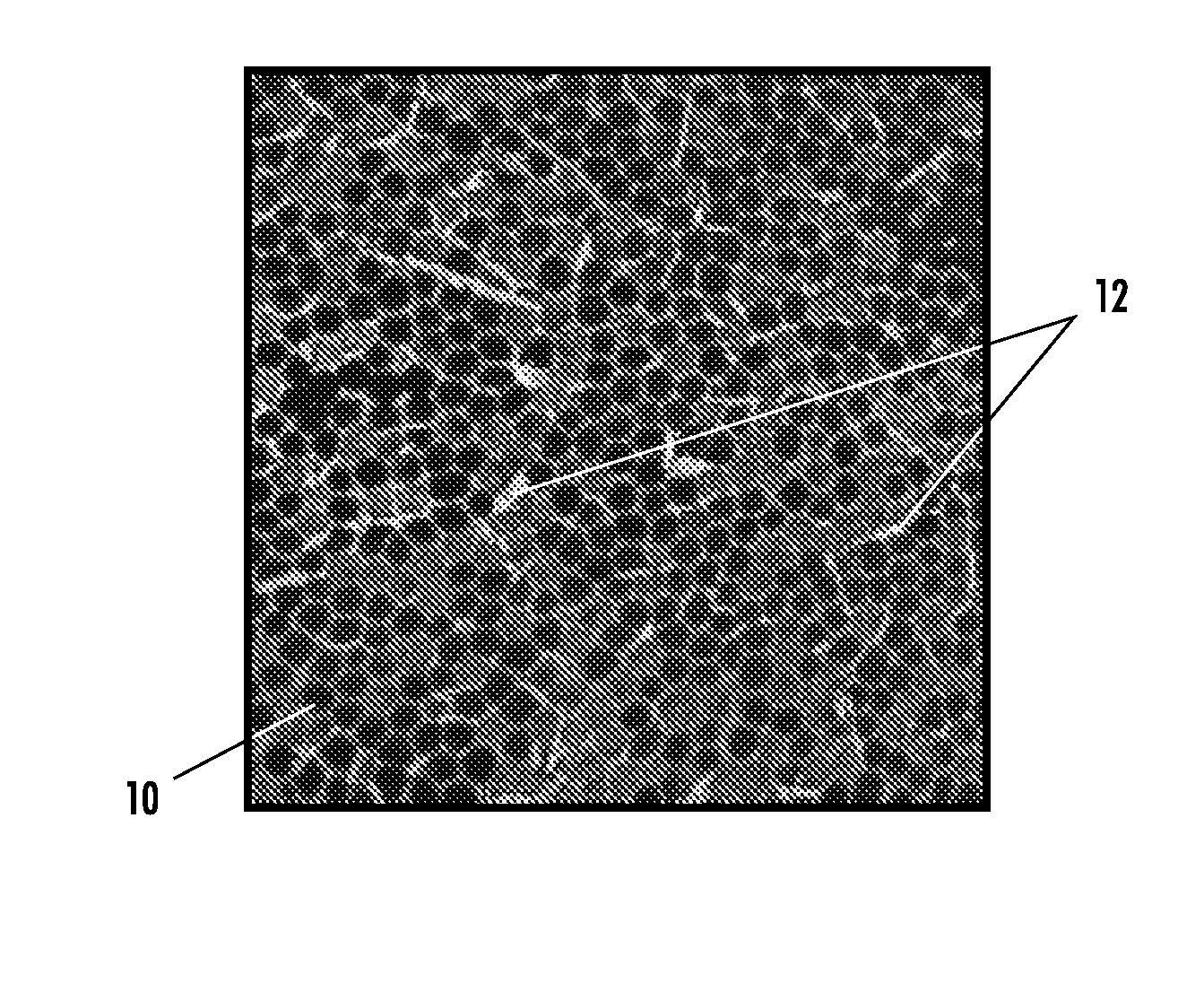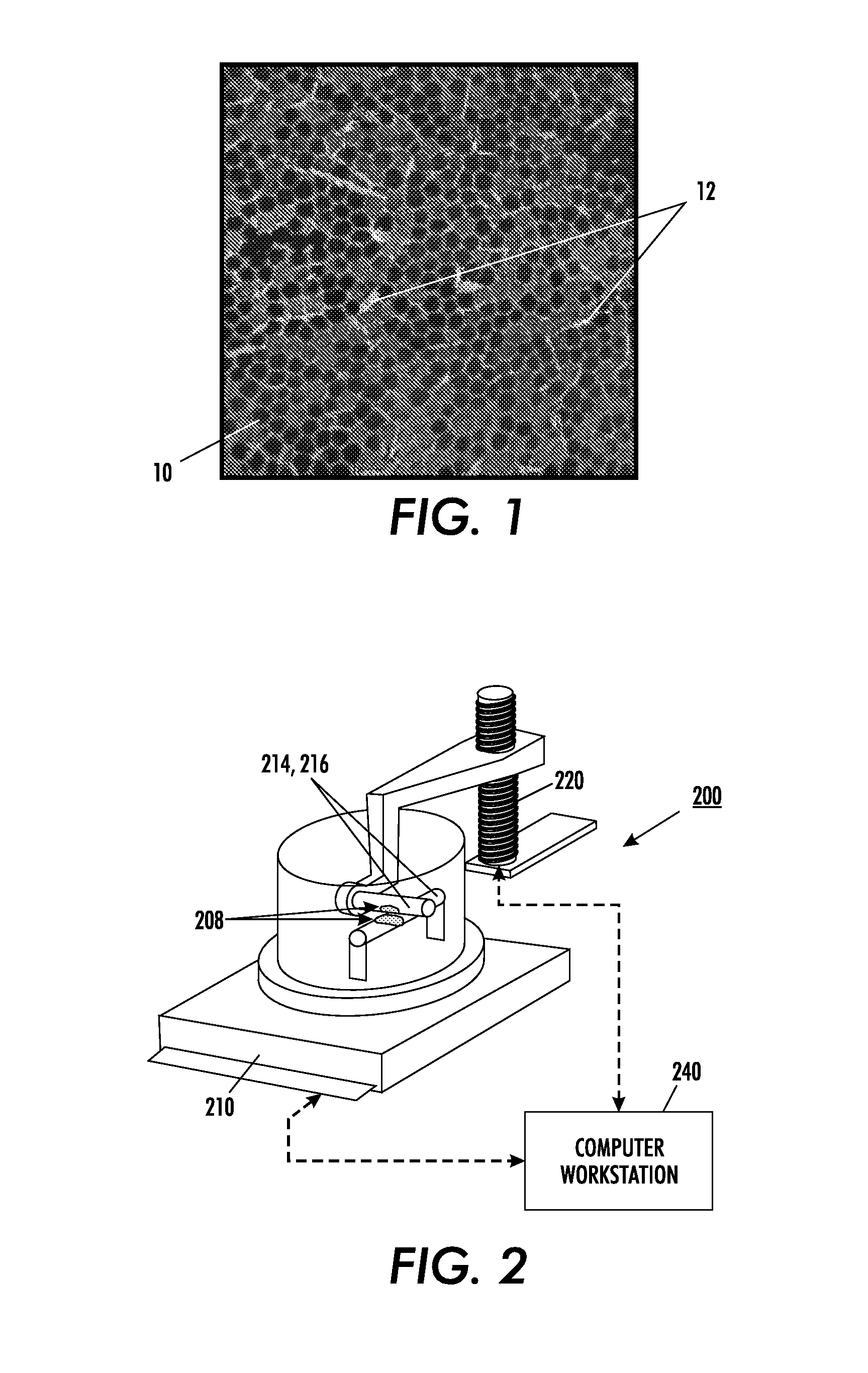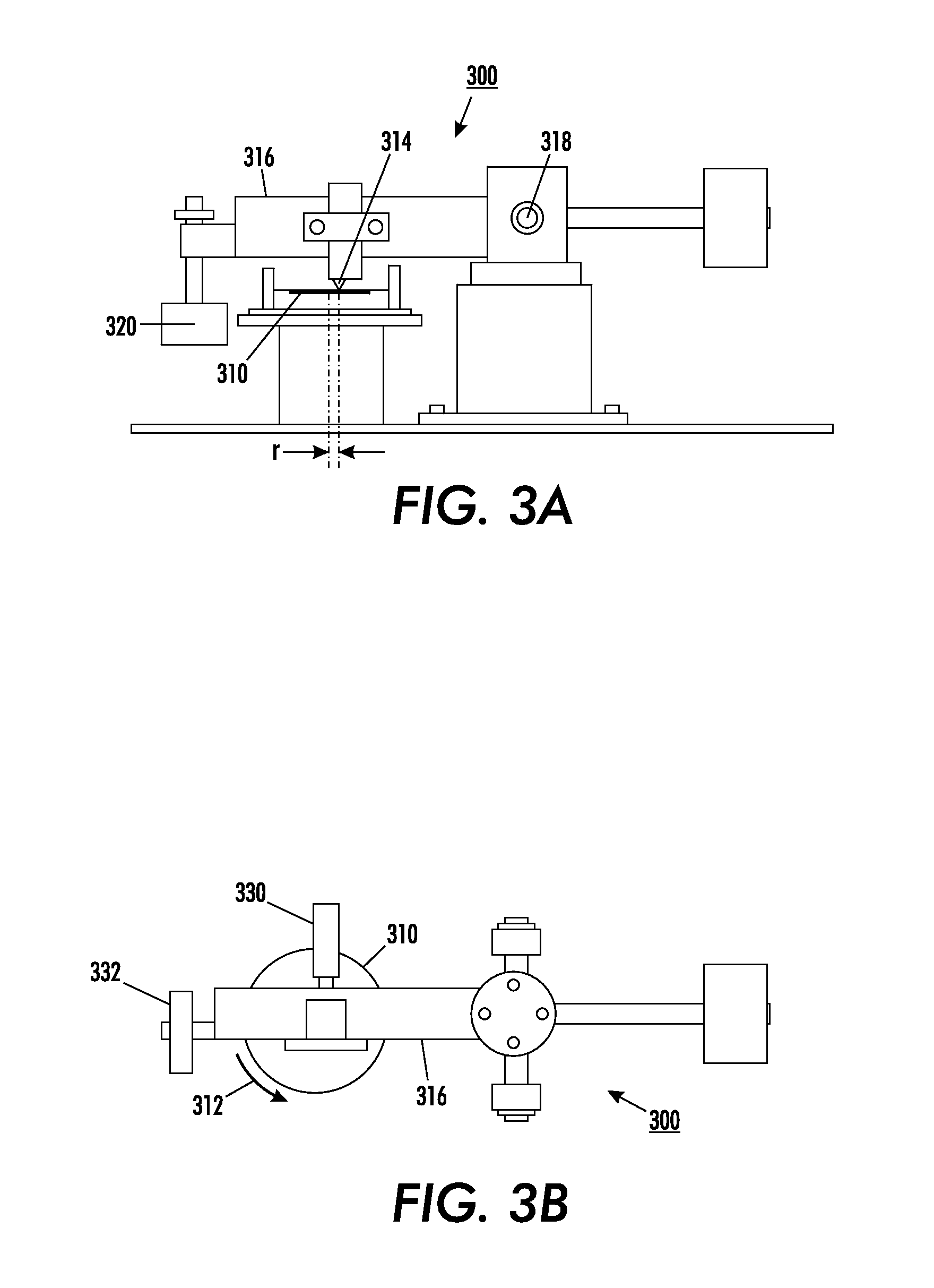Polymeric adhesive including nanoparticle filler
a polymer adhesive and filler technology, applied in the direction of non-macromolecular adhesive additives, applications, coatings, etc., can solve the problems of affecting the effect of nan composite adhesive coating, affecting the quality of nan composite adhesive, so as to achieve the effect of optimizing the polymer adhesive, improving the potential for homogeneous dispersion, and reducing the loading level
- Summary
- Abstract
- Description
- Claims
- Application Information
AI Technical Summary
Benefits of technology
Problems solved by technology
Method used
Image
Examples
example 1
[0054]Halloysite nanotube material, particularly Halloysite premium EG, was obtained from Nanoclays and Technologies, Inc. The halloysite nanotube material was dispersed into a commercially available low-Tg Dow Corning acrylic copolymer latex emulsion (MG-0580) at 5, 10, 15 and 20% HNT loading (weight percent solids). MG-0580 is one of a number of acrylic adhesives, or more specifically aqueous pressure sensitive adhesives available from Dow Corning.
[0055]Preparation of the HNT dispersion
[0056]A DISPERMAT VMA-Getzmann GMBH-D-5226 Reichshof, with a 25 mm disk knife, was used to prepare the halloysite dispersion. The HNT powder was added in small portions to water under stirring at 4000 rpm. When all the powder was added, the blend was left under stirring at 4000 rpm for an additional 10 minutes. The suspension was then placed into a conical flask with connection to vacuum to evacuate the HNTs. Dry content of the suspension was determined by evaporation.
[0057]Preparing of Suspensions ...
examples 2 and 3
[0079]Halloysite premium EG, obtained from Nanoclays and Technologies, Inc and KC Kaolin, a mixture of halloysite and kaolin clays obtained from i-Minerals were separately dispersed into a low-Tg Rohm and Haas acrylic copolymer latex, Roderm MD 5600 (Tg=−30C) at about 10% weight percent solids of the clay. Roderm MD 5600 is one of a number of acrylic adhesives, or more specifically aqueous pressure sensitive adhesives available from Rohm and Haas.
[0080]Preparation of the Halloysite Coating Solutions
[0081]The MD 5600 latex (55% solids) was diluted with de-ionized water in an amount such that the total percent solids of the final experimental coating solutions were approximately 50% solids. The mixing head of a Model SPX Premier Mill Laboratory Dispersator was inserted into the diluted latex and brought to 4500 rpm. The halloysite containing powder (Example 2 used Halloysite EG; Example 3 used KC Kaolin) was added in small portions into the stirring latex in order to produce a clay lo...
PUM
| Property | Measurement | Unit |
|---|---|---|
| Fraction | aaaaa | aaaaa |
| Fraction | aaaaa | aaaaa |
| Weight | aaaaa | aaaaa |
Abstract
Description
Claims
Application Information
 Login to View More
Login to View More - R&D
- Intellectual Property
- Life Sciences
- Materials
- Tech Scout
- Unparalleled Data Quality
- Higher Quality Content
- 60% Fewer Hallucinations
Browse by: Latest US Patents, China's latest patents, Technical Efficacy Thesaurus, Application Domain, Technology Topic, Popular Technical Reports.
© 2025 PatSnap. All rights reserved.Legal|Privacy policy|Modern Slavery Act Transparency Statement|Sitemap|About US| Contact US: help@patsnap.com



